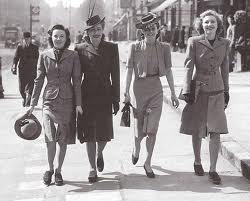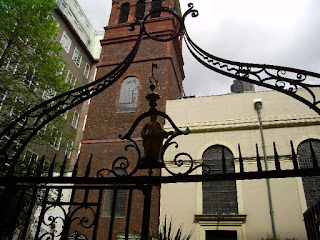 |
| Front elevation |
Miss B never tires of visiting this park which is the site of the great house of Farley Hill, (previously Grenade Hall) the ruins of this once fine Georgian Mansion evokes romantic notions and thoughts of how it must have been to live in such splendour and wealth. The site is 900 feet above sea level and is laid out in approximately 17 acres of shady forest. A cool and welcoming place from the heat of the island, with wonderful views over the East Coast. The house is built of coral stone and finely crafted.
 |
| View of Atlantic Coast |
There are remains of what was once a splendid garden, possibly a large pond with a fountain fed from natural sources. The original owners and descendants were keen botanists and planted many unusual trees and plants from around the world. Some long since gone, firewood during the wars of Europe and/or destroyed in ignorance when clearance was carried out when Farley Hill became a national park in1966.

The bare bones of the house was begun in 1818 (date found on internal parapet). Joseph Lyder Briggs came into possession of the mansion circa 1850. He never lived there and gave the house to his son, Thomas Graham Briggs, upon his marriage, who added a South Wing and library, billiard room, bedrooms and it is said there were as many as 99 windows. On his death his wife returned to England.
The house was sold to a cousin, Benjamin Courbank Howell, who found it too far away from Bridgetown to be anything but a weekend retreat. Finally it was rented out and by 1940 was beginning to show signs of decay. The Caribbean climate does not allow for neglect of any kind of property, it needs constant attention. The local idea of conservation also does not bear thinking about, it would not do for English Heritage, but I feel they do their best with limited funding.
 |
| Pediment with Coats of Arms |
The mansion was used in 1956 as the 'Belfontaine Mansion' of the fictitious island of Santa Marta in the film 'Island in the Sun' - not long after it suffered a huge fire which all but destroyed it; perhaps caused by the inflammable materials left by the Hollywood crew. We will never know.
 |
| Possibly remains of pool with fountain |
However the government of Barbados saw the ruins as a heritage spot and took it over as a national park and it was opened by Queen Elizabeth II in 1966. Several of her relatives had, over the previous 100 years been guests at the mansion.
 |
Rear elevation with original carriageway
|
On my return to the island, I plan to visit the local museum and try to discover more about the house.
It would seem the Briggs family were likely with or just behind the first settlers to arrive at Jamestown (now Holetown) 1627.
Extract from the Archives of the Briggs Family
(5.) Joseph Lyder, esq- of Briggs, Majmards, and Farley Hill'
Barbados J. P.
Col. of the St. Lucy reg't of militia, b. 7, July
1792, m. 1832, Elizabeth
dau. of Benjamin Hinds, esq. of Hinds-
bury Treasurer of Barbados, and widow
of John Abel Jackman,
esq. of Rockless, and d. 17 Sept, 1866, leaving an
only child, the
present Sir Thomas Graham Briggs, Bar't.
Creation. — 27. Nov. 1871.
Arms. — Arg., three bars, gemelles, az. a
canton of the last
thereon a bridge, of the first.
Crests — Upon the
stumj) of a tree, erased and couped, and charged
with a trefoil, ppr. a
pelican, vulning herself, wings elevated arg.
Mottoes. — "Virtus est
Deo'' over the crest ; "Ne traverse pas le
pont," under the arms. ,
Seats. — Briggs-Dayrell, Maynards, and Farley Hill, Barbados ;
Old
Manor, Stoney Grove, and Round Hill, Nevis.
Cannot see details to clearly from my photographs, but there is a definite 'Ne' under the arms!
.JPG)
.JPG)
.JPG)
.JPG)
.JPG)


















.JPG)



